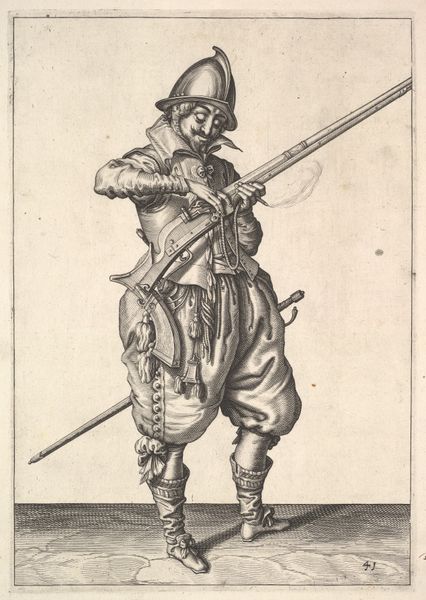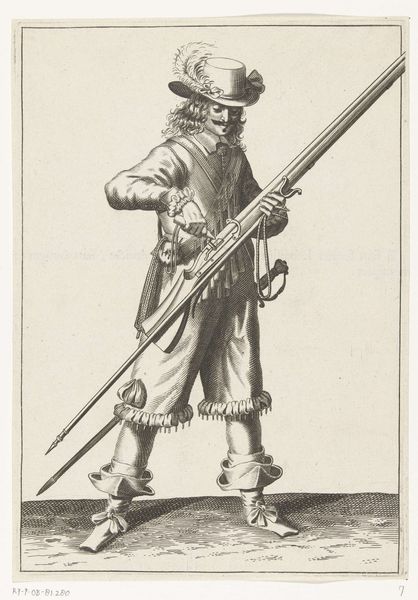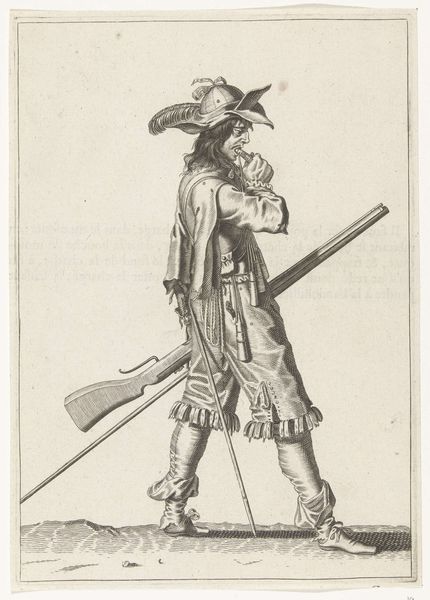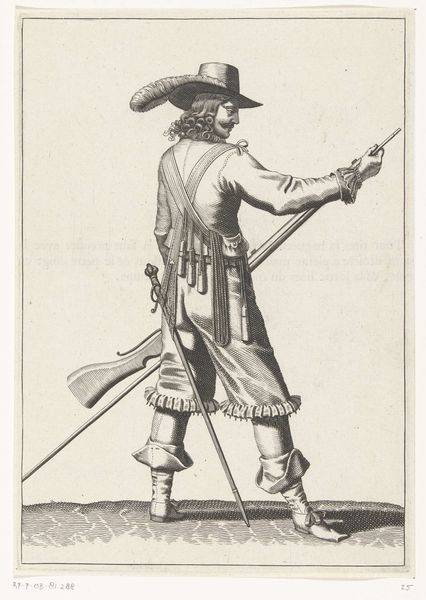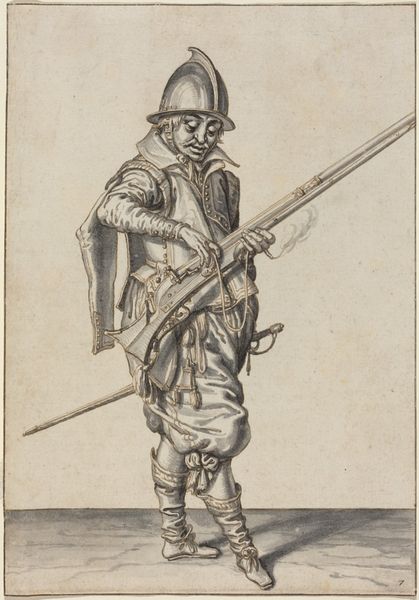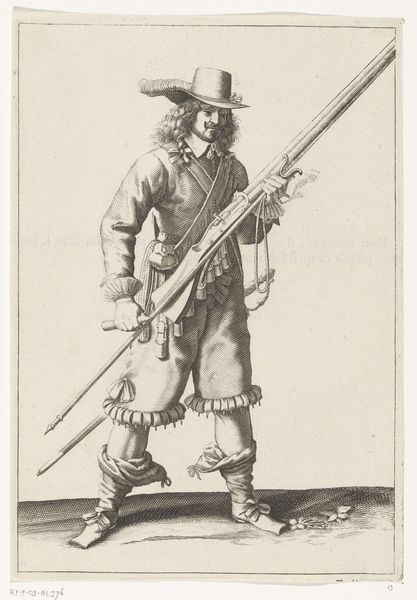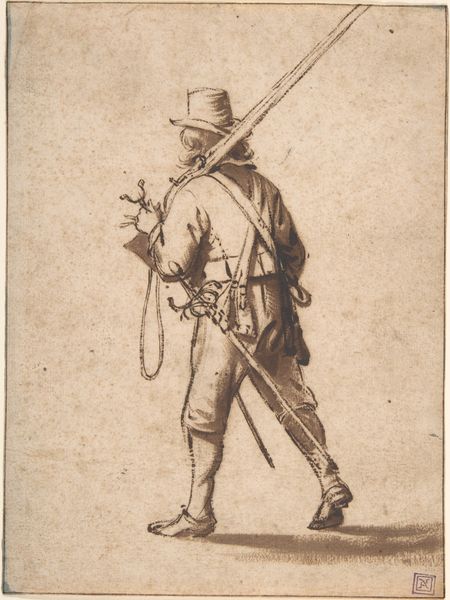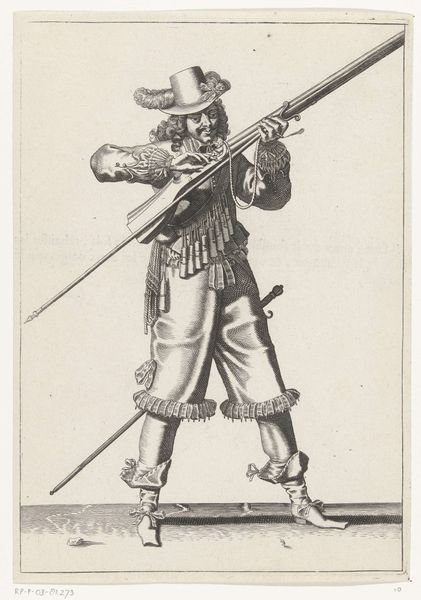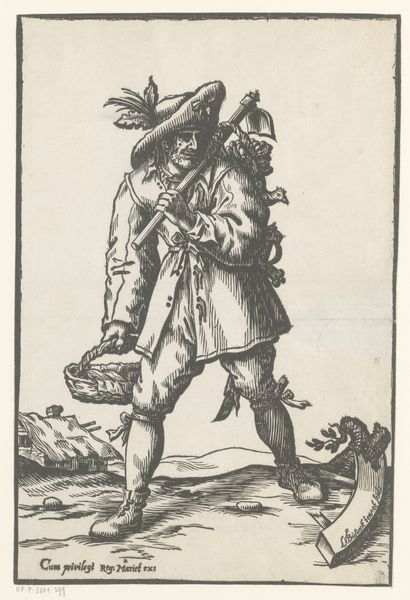
A soldier shaking the powder from the top of the pan, from the Musketeers series, plate 19, in Wapenhandelinghe van Roers Musquetten Ende Spiessen (The Exercise of Arms) 1565 - 1629
0:00
0:00
drawing, print, engraving
#
portrait
#
drawing
#
baroque
# print
#
soldier
#
genre-painting
#
engraving
Dimensions: plate: 10 1/2 x 7 1/2 in. (26.7 x 19 cm) sheet: 13 7/8 x 10 9/16 in. (35.3 x 26.8 cm)
Copyright: Public Domain
Editor: We're looking at an engraving by Jacques de Gheyn II, dating sometime between 1565 and 1629. It's called "A soldier shaking the powder from the top of the pan" and it’s part of a series on musketeers. There's almost a mundane quality to it; a soldier caught in this very practical act. It's interesting how a scene of military life has become this quiet genre piece. What do you make of its focus on this singular figure, his task, within the larger socio-political context? Curator: The series "Wapenhandelinghe van Roers Musquetten Ende Spiessen" served as a drill manual. What's intriguing is that it depicts these soldiers performing mundane, technical tasks. These images had real, practical use. The series helped standardize military procedures. It also highlights the growing professionalization of the military during this era, transitioning from feudal levies to organized, trained armies. Where do you see evidence of social power in this image? Editor: Well, the soldier's garb—the elaborate hat, the puffy breeches—suggests some level of status. He's not a peasant conscripted into service. Also, the very fact that this series exists, illustrating the proper handling of a musket, indicates an interest in control. Curator: Exactly. There’s an assertion of dominance not just on the battlefield, but in controlling and shaping military culture itself through imagery and standardized practice. De Gheyn's decision to isolate a single soldier for each step and to show it with such detail made a statement on who controlled war. How did institutions help standardize best practices and who decided that in a broader European conflict? Editor: That makes me think about the role of the printing press, too. The widespread dissemination of these images through print was instrumental. Thanks for giving me a wider scope on a "genre painting". Curator: And in understanding the visual representation, what social forces does it both capture and reinforce? I find that perspective particularly rewarding when viewing pieces such as this one.
Comments
No comments
Be the first to comment and join the conversation on the ultimate creative platform.

